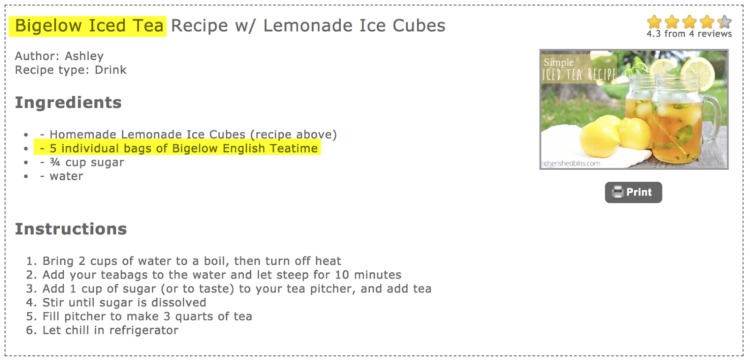In this comprehensive influencer marketing guide, we’ll provide you with the latest insights and strategies to help you navigate the ever-evolving realm of influencer marketing.
In the world of digital marketing, influencer marketing has emerged as a powerful tool for successful branding. As we fast approach 2023, it’s crucial for brands to understand how to effectively leverage influencer marketing to stand out in a crowded marketplace.
Whether you’re a small business looking to build brand awareness or a global corporation aiming to increase your online presence, this guide has got you covered. Discover how to identify the right influencers for your brand, create impactful content collaborations, and measure the ROI of your influencer marketing campaigns. Plus, we’ll reveal the emerging trends and best practices that will shape influencer marketing in the year 2023 and beyond. Stay ahead of the curve and ensure your brand remains relevant and competitive in the digital landscape.
Get ready to elevate your branding with our ultimate influencer marketing guide.
What is influencer marketing?
Influencer marketing can be described in many different ways. Simply put, it involves collaborating with media personalities who have built a strong brand reputation in their particular niche to support your brand or endorse your product. Some brands even co-create content with their influencer partners. Ultimately, the goal of influencer marketing is to increase brand awareness and drive sales.
This type of marketing has become more popular among businesses at this point in time because research has shown that traditional advertising is less effective in attracting leads and customers than it was before. Influencer marketing works more effectively than traditional marketing because it uses tactics like word-of-mouth marketing and social proof, which have become very critical parts of any successful marketing strategy.
This form of marketing can be unique because brands have to meet the needs of their influencer partners, in addition to the needs of their target audience. In order to do this, brands need to respect influencers and build organic relationships with them. To initiate these relationships, these brands can give influencers early access to the upcoming product launch, or invite the influencer to visit the company in person.
It is important for brands to be strategic when crafting their brand message. An influencer’s aim is always to promote a positive image of the brand they are partnering with. Be that as it may, sometimes your message can be taken out of context and turned into something negative.
What influencer marketing is not
Influencer marketing is not just about finding someone with a huge following and offering them money to say good things about you. Influencers spend time building up their own brand and getting earned media. They generally have the patience to succeed on social media and are quite protective of their reputations because people trust them. Contrary to popular belief, influencers aren’t in it just for the money.
It is not about quick results. Much like other forms of marketing, influencer marketing requires a slow and steady approach. It is about demonstrating your authority, credibility, and thought leadership within your industry. The whole point of marketing is to acquire followers who are loyal and engaged. Of course, it is very common to think that joining forces with an influencer is the easy way out because they already have the hearts and minds of their followers. But, at the end of the day, you also need to earn their trust and respect.
What does not work
Before you start your influencer marketing campaign, you need to understand that you cannot generalize your approach because not all influencers are the same. Much like pitching to media outlets, you need to tailor your approach to each specific influencer. Secondly, do not just solely look at the popularity of the influencer. Your goal is to drive a particular action from your target audience, so it would be unwise to assume that people with the most followers are influencers of your target market. Rather, you should also evaluate the engagement each influencer on your list has with their audience. This will give you a more accurate indication of whether your message will be heard by the right people.
Why is influencer marketing so powerful?
Now that we have taken a look at the definition of influencer marketing and why is it important, let us take a look at why and how it has become one of the most powerful marketing strategies:
- It’s influential
- This engaging and social
- It’s trendy
- It’s profitable
1) It is influential
Influencer marketing enables brands to leverage the power of word-of-mouth to generate more conversions than traditional marketing. Companies use Influencer marketing because influencers are highly trusted and respected by their followers.
They’re cool, they’re hip, they’re powerful thought leaders in their community and they utilize social media to their advantage which gives them a wide reach and large audience.
2) It is engaging and social
By working with an influencer, brands can engage indirectly with their audience, sparking conversation, and getting free product promotion. These days, people don’t expect brands to actually sell directly to them anymore. They want brands to engage with them, entertain them, and inform them instead. This is where influencers come in because they provide their audience with entertaining content and high value.
3) It is trendy
You have heard of “Keeping Up with the Joneses,” right? Shows like these are popular because audiences get invited into the everyday lives of influencers who they admire. Ultimately, the audiences who watch these shows want to mimic the influencer’s life as much as possible. People want what they see other people having. These days, influencers have the power to help convince people that your brand/product is the next big thing because they have the ability to influence.
4) It is profitable
A 2020 study showed that 90% of marketers believe the results from influencer marketing are better than other forms of marketing. For this reason, a large number of brands allocate more than half their marketing budget to influencer marketing. Working with influencers doesn’t come cheap, but the gains definitely outweigh the costs.
Types of influencers
Before you build your marketing strategy, you need to figure out the type of influencers you want to promote your brand. Let’s take a look at the different types you can engage with:
- Micro-influencers
- Celebrity Influencer
- Blog Influencer
- Social Media Influencer
- Key Opinion Leaders
1) Micro-influencers
These influencers have a relatively modest following within their niche. They create relevant content for their audience and communicate with them through various platforms. Having a smaller audience allows them to bond with the people who follow them regularly. Working with them is more appealing for businesses that are trying to develop personal relationships with their target audience.
How to work with them
Due to their manageable size of followers, they are able to communicate with your target audience. When you have chosen the right micro-influencer, you can ask them to write a post about your service, share a review, or post a photo on Instagram with your product. After that, they can talk about their experience with your product or direct audience members to your website.
2) Celebrity influencers
Celebrity influencers generally have a large following and are known across many industries. They are widely recognized and have the potential to be very successful in influencing your target audience. Even if their fans don’t overlap with your target audience, having them promote and/or use your product or service is a very powerful form of social proof.
How to work with them
Celebrities are a bit harder to engage with, but there are many ways to work with them. You can start by focusing on social media, print or online ads, TV commercials, blogs, etc.
From there, depending on your budget, you can ask them to pose for pictures promoting your product, explain why their audience members would love your product, and provide coupons and discount codes. You can even sponsor an event that they are hosting or attending.
3) Blog influencers
They already have established blogs and have plenty of subscribers and readers. Their influence and reach set them apart from other bloggers and they are able to promote your product and service through their websites and writing.
How to work with them
To work with them, you can start by writing a guest post for them on their blog. You can ask to be mentioned in one of their posts or sponsor a post on the influencer’s blog and provide images of products for them to share.
4) Social media influencers
These influencers are the ones who we know well through their social media platforms. Thousands and even millions of people follow them. They share content across a wide range of topics like health, workouts, cars, diet, travel, etc.
How to work with them
As with other influencers, you should find the ones who already have an established image on social media platforms. These people can work with your brand to create content that will complement your products or services. Once you’ve settled on who you want to work with, you can determine the type of content that you want them to promote.
If an influencer is on Instagram, you can get them to post a picture with your product and tag your social account. If they are on Facebook, you can ask them to do a live unboxing video. The same concept applies to Twitter and YouTube. You can even get them to host a contest or giveaway of your products.
5) Key Opinion Leaders
They are trusted contributors in their industries because of their expert knowledge. They are a great option to work with because their followers are people who are also invested in their subjects.
How to work with them
You can most likely find these influencers through social media and even through more academic platforms like journals. If you choose to work with a key opinion leader, then your business will have a wider range of people to choose from. Ask them to give their expert advice about your product and mention you in their column, share branded content or pose with your product.
How to create an influencer marketing strategy
Now that we have an idea of what influencer marketing is and the different types of influencers, let us dive into how to create a successful strategy.
- Determine your campaign goals
- Define your campaign audience
- Set your budget and choose your influencer type
- Choose your influencer and review their work
- Develop campaign messaging for your influencer
- Finalize campaign expectations with your influencer
- Reward your influencer
- Measure your results
1) Determine your campaign goals
As with any other marketing strategy, it is important to create achievable goals to measure the success of your campaign. When you are working to develop your SMART goals, there are 3 things that you need to keep in mind; reach, relevance, and resonance.
Reach: The ability to deliver content to your audience through an influencer. How many social media users will see the content that the influencer posts about your product?
Relevance: The level of connection that your audience feels to your brand, product or service because of the work done by the influencer. If your audience sees that someone they love and admire likes and uses your product, then they will feel a strong connection to it.
Resonance: The ability to drive audience members to a specific action because of an influencer’s content. It helps you increase your follower count, drive traffic to your site, and boost conversions.
2) Define your campaign audience
No matter the type of influencer that you decide to work with, you should make sure you can reach your target audience through this influencer. You need to develop a buyer persona so that you can identify the exact type of customer you are targeting, choose the right influencer, and develop content that will appeal to them.
3) Set your budget and choose your influencer type
It is very important to consider your budget because this will determine which influencers you can afford to work with. If you are a startup with a low budget, then it’s wise to work with a micro-influencer. Once you’ve been in the market for a while, you can engage an influencer with more reach.
4) Choose your influencer and review his or her work
Once you have figured out the type of influencer you want to engage, it is time to find the right individual for your company. Ask yourself and the influencer these questions so you know that they are the right fit.
- Do they and their lifestyle fit your brand image?
- Have they worked with any of your competitors?
- Who is the influencer’s current audience?
- Is your target audience active on the platform/channel used by the influencer?
- Does working with the influencer make sense for your budget?
- Have they used any of your products or services before?
- Do they have the right personality?
- What will the influencer expect of you?
5) Develop your campaign messaging for your influencer
After you have chosen your influencer, start clueing them into your campaign and figure out what content your influencer should and should not publish. Make sure that you share your brand guidelines so that they can remain on-brand with their content. They are representing your brand and business, so make sure that they have the tools to do so.
You should also determine whether the influencer will be creating content for your campaign or whether you will be providing the content for them to post.
6) Finalize campaign expectations with the influencer
You need to remember that the influencer may already have their own way of doing things when it comes to business. So, have a chat about the expectations that you may have of them, but remember to also discuss the expectations they may have of you.
7) Reward your influencer
Influencers do not work for free. You need to discuss the form of payment when you finalize the campaign. There are several ways you can reward an influencer:
- Money: payment before or after the content is created and shared
- Swag: clothes, accessories, product samples, etc
- Free products
- Access to discount codes and coupons
- Promotion on your website, blog, and/or social media platforms
8) Measure your campaign results
Finally, it is important to measure the results you obtained through your campaign. This is how you figure out the level of success you have had reaching your market using influencers. Think back to the SMART goals that you set when you started your campaign and see if you achieved your objectives.
Things to measure include:
- Engagement: Likes, shares, comments, Retweets, Mentions, Direct Messages, and Reposts on channels like social media, blogs, and forums.
- Reach: How many people are actually seeing the content your influencer is sharing about your brand?
- Resonance: The actions that were completed by your audience members after they consume and/or interact with the influencer’s content involving your brand.
- Brand Awareness: Quantitative brand awareness; direct traffic and social engagement and qualitative; social listening and awareness surveys.
- Clicks: Number of clicks on the content the influencer shares about your brand.
- Conversions: The number of leads who become customers.
- Return on Investment: Calculate ROI by dividing the return by the cost of influencer marketing investment.
- Follow Count: Track the increase and decrease of your number of social media followers over time to see whether the influencer is helping or hindering you.
Successful influencer marketing campaigns
1) Celebrity Influencer: Nespresso and George Clooney

Nespresso brought George Clooney on for their Cup Above campaign because he is a globally-recognized celebrity and he fits their sophisticated and elegant brand image. They now have print ads, digital ads, social media posts, and television commercials starring him.
2) Social media Influencer: Turkish Airlines and Jerome Jarre

Anyone who has Instagram or Snapchat knows about Jerome Jarre. He partnered with Turkish Airlines, which happens to be the only international airline flying to Somalia to bring humanitarian aid to the people there. His plan was to fill a plane full of food and water to help the cause. Within the first few days, his post was reposted 83,000+ times and gained 58,000+ likes on Instagram. He also had the help of his influencer friends and celebrities to raise 1 million dollars in just 24 hours.
3) Blog Influencers: Bigelow tea and Ashley from Cherished Bliss

Their plan was to retain customers and hold their position in the tea market. They decided to differentiate and adapt to the times so they partnered with lifestyle bloggers like Ashley from Cherished Bliss. Her blog post posted them to the top of the Google search chain when people looked them up using the right keywords.
Conclusion:
Influencer marketing is becoming a very real and successful strategy to stay relevant in the market. Even so, this type of marketing requires the right strategy. Work on creating relationships with influencers and make sure that you make it worthwhile for them to promote your product and service as well.
If you want to create the kind of content that influencers find appealing, you should consider partnering with Pressfarm. Armed with a team of PR specialists, expert writers, and certified designers, Pressfarm can create professional press releases, winning guest posts and eye-catching media kits for your brand.
In addition, the team at Pressfarm has developed a content distribution strategy that has proven to work for hundreds of brands. By submitting your content to the right media outlets and startup directories, Pressfarm can boost your online visibility and ensure your brand ranks in relevant search results across search engines.
Moreover, with custom media lists and a database of over 1 million journalists across different industries, you can connect with the best journalists in your niche. If you need help creating a brand that is appealing to both influencers as well as your target audience, then one of Pressfarm’s packages might be just the thing for you.

